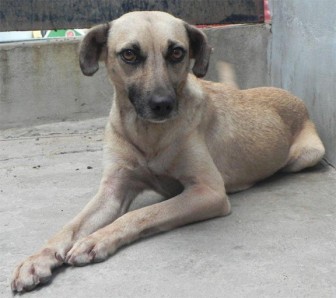General comments
Today, we commence a whole new topic. Ailments of the urinary tract are quite common in dogs and cats. I do believe that the changes in the diet we offer our dogs and cats are not in sync with the development of the pets’ physiology. As a result, there are great stresses placed on the organs. For example, if the dog’s diet traditionally (in the wild) was based on almost pure meat, then the digestive/excretory process would react differently when confronted with a heavy plant-based carbohydrate diet.
The kidneys of dogs and cats seem to be under special pressure because of the new lifestyles and feeding regimes. I remember my Professor once saying, albeit a long time ago, that the dog is fundamentally a “nephritic.” I suppose he meant that if one organ in the dog’s anatomy would go bad, it would be the kidney. Forty-three plus years of experience tell me that his observation was correct, especially with regard to elderly dogs and cats.

Well, there is a connection in the sense that the secretion from the prostate enters the urethra – via small ducts (canals). But perhaps it is more logical to associate the prostate gland with the sexual (reproductive) system rather than with the urinary system. So, I will deal with the prostate gland ailments when problems of the reproductive system will be discussed.
The kidneys are paired organs located on each side of the backbone just behind and below the last ribs. Each kidney has a renal pelvis or funnel that siphons the urine into a ureter. (See above).
The ureters pass on down to the pelvic brim and empty into the bladder. The passageway that connects the neck of the bladder to the outside is called the urethra. The opening of the urethra is found at the tip of the penis in the male and between the folds of the vulva in the female. In the male, the urethra also serves as a channel for semen.
One function of the kidneys is to maintain water and mineral balance and excrete the wastes of metabolism (a simple definition for metabolism is: that process by which nutritive material (food) is built up into living matter; during the course of this building up of tissue some waste stuff is produced). This is accomplished by nephrons, the basic working units of the kidneys. Damage to nephrons leads to renal insufficiency (kidney failure).

Normal urine is yellow and clear. Its colour can be altered by the level of the body’s water content (state of hydration), and by certain drugs which produce an orangish colour. Aspirin or vitamin B-complex tablets, for example, tend to turn urine an orangish-yellow. I should mention that colouring materials used in food additives are excreted by the kidneys, and would therefore colour urine accordingly.
The act of urinating is under the conscious control of the central nervous system. A dog can decide when he wants to void. This is the basis for successful house-training. But once the decision to void is reached, the actual mechanism of bladder emptying is carried out by a complicated spinal cord reflex.
More about the urinary tract and its ailments next week.
Please implement disease preventative measures (vaccinations, routine dewormings, monthly anti-heartworm medication, etc) and adopt-a-pet from the GSPCA’s Animal Clinic and Shelter at Robb Street and Orange Walk, if you have the wherewithal to care well for the animals. Do not stray your unwanted pets, take them to the GSPCA’s Clinic and Shelter instead. If you do not wish your pet to have puppies or kittens, you may exploit the GSPCA’s free spay and neutering programme. If you see anyone being cruel to an animal, or if you need any technical information, please get in touch with the Clinic and Shelter by calling 226-4237.




